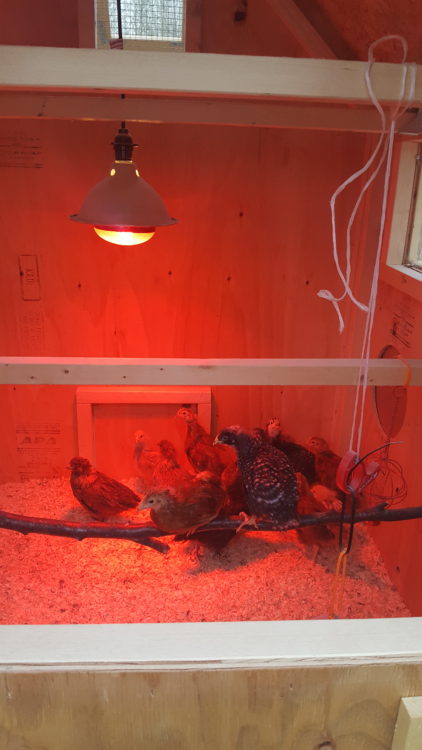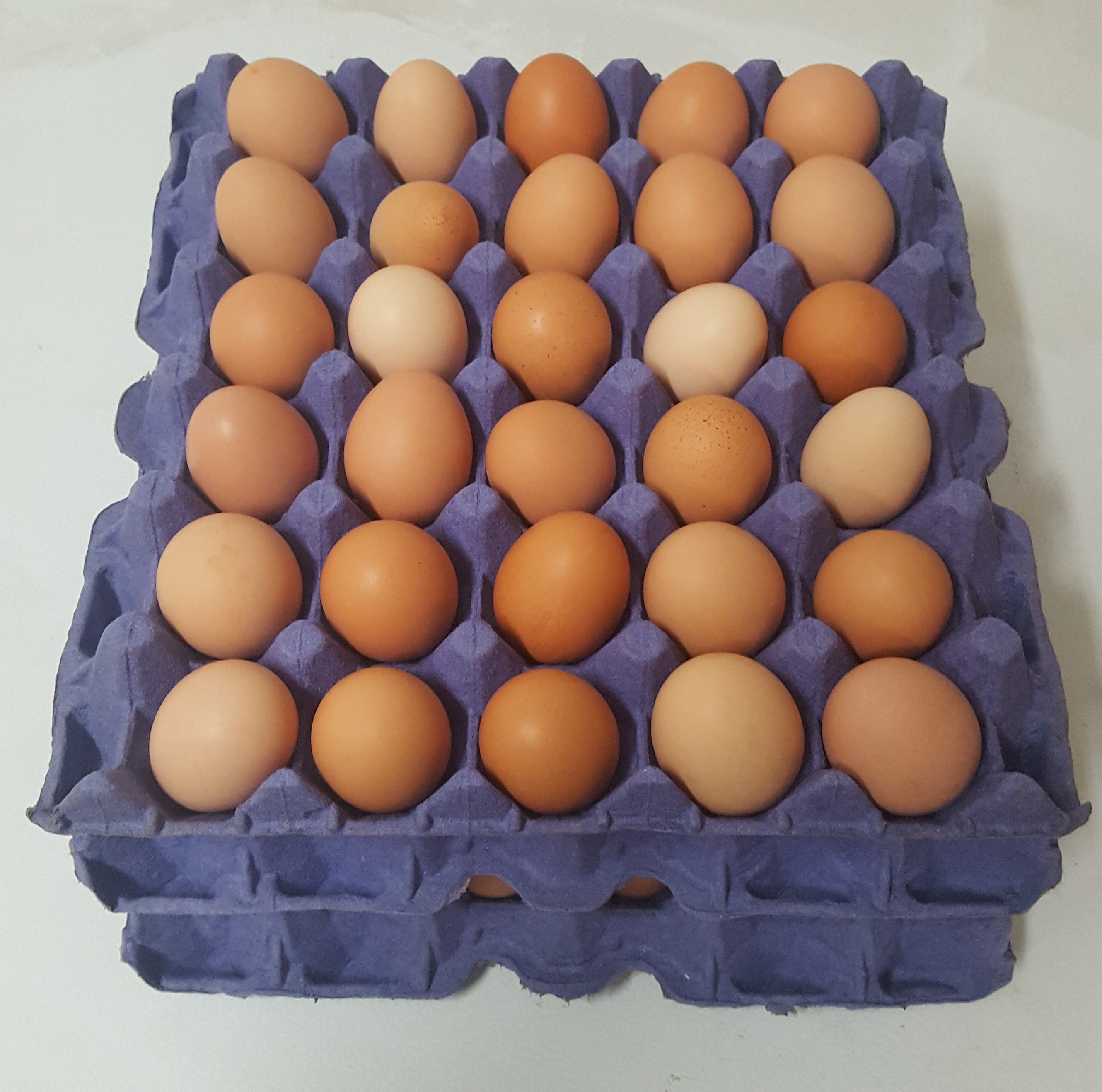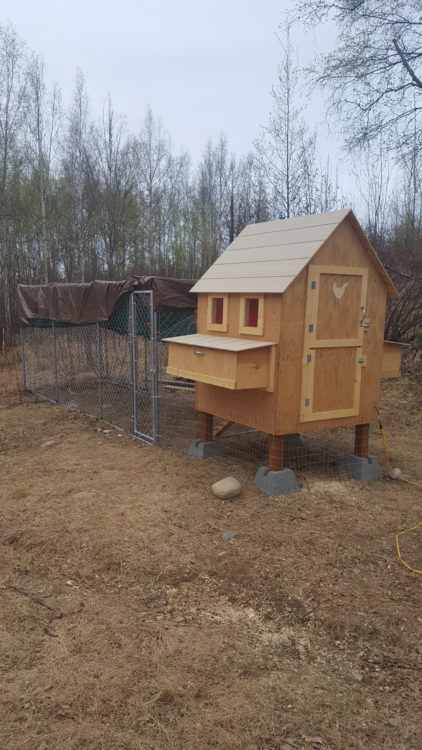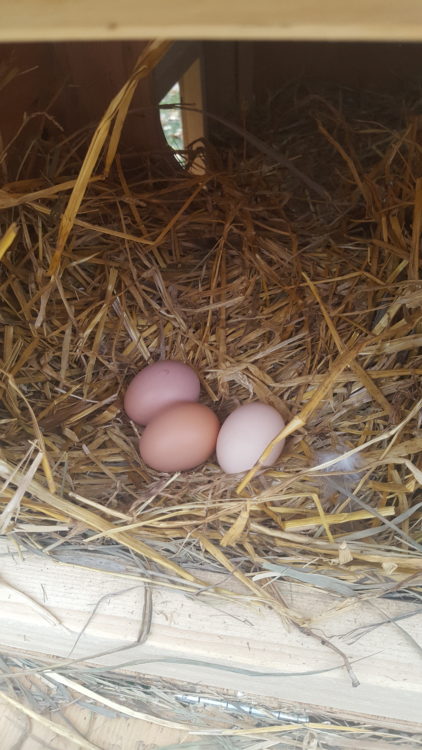The normal thing to do these days is to go out to the store and purchase a dozen or so Chicken eggs. The eggs are usually white and can be counted on to be very consistent in size and flavor. If you are wanting to clear your conscience, you can usually find a cage-free option for a little more. But what about raising your own Chickens for eggs? That is exactly what I do for my family. It is a bit of an initial investment, but it has good perks compared to just deciding to buy eggs at the store.
IS IT WORTH IT?
Many times when I tell people that I have my own Chickens, they start asking questions that imply that they think I am a farmer. But up here in Alaska, raising your own Chickens is normal and many people do it for their own source of eggs and meat. Depending on where you go, you may see a whole neighborhood of people that raise anywhere from 6-50 Chickens for meat and/or eggs for themselves. The agriculture industry here in Alaska is strong and there is a good size of it supporting the everyday Joe that has his own livestock. But there are not many of these people selling their eggs and meat to the local butchers or other individuals. Not saying it doesn’t happen, because there are actually quite a few, but not as many as you would think.
The biggest things that will determine if it is worth it to have your own Chickens is the flexibility of your local laws, land and room for the animals to roam, and your budget versus the payoff. If you have the land and the local laws do not inhibit you from raising and owning Chickens, then I would get started. But then again, there is the factor of the budget. The initial investment can take alot if you do not price shop and consider the affect of your choices in the long run.
Now, I don’t want readers to think that Chickens will burn a hole in your pocket, but the initial stages of a Chickens’ life will be demanding on you. But as they get older and get started on Free-Ranging(If that is even an option), the costs and attention demands will fall drastically. At this point, I just let my Chickens free-range in my yard after they get done laying for the day. I hardly ever do anything except collect eggs, make sure they have enough water in their huge reservoir, and make sure they have calcium supplements around for making good strong eggs.
As far as initial investments, there are a few things you will have to have in order to raise the chicks into Chickens and to get to the point where you reap the rewards:
- Shelter– Coop, Run, Brooding box for raising the chicks. All together, I paid about $1100 for everything in terms of shelter and put everything together myself to save a couple hundred more dollars. I paid a local coop maker to design and build my custom coop for about $800. I got a 5×15 dog kennel for $200 and paid about $100 or more for the extra poultry netting and wire to plug up the gaps and get concrete base stands for the coop to stand on.
- Food– Raw Materials(oats, barley, wheat, sunflower seeds, oyster shells, grit, peas, fish meal, etc.)pellet or crumble(No Corn/No Soy) feed. I used to get bagged pellets and crumbles, but after finding out that I would pay half and get healthier feed, I started making my own mix using materials from local farmers. For $140, I was able to mix up about 200-300 pounds of feed for my Chickens, which can last about 3 months. Usually a 40lb bag of pellets would run about $25-$30. How is that for savings?
- Water– When the chicks are young, it is suggested that you mix in a little bit of Apple Cider Vinegar in order to keep the chicks happy and healthy. Research shows that it can be beneficial throughout the entire life of the Chicken.
- Gear and Hardware– Initially you need stuff to feed the Chickens with that will be easy to clean and easy to fill. As the Chickens get older, they will quickly start to eat at an ungodly rate, so your feeders will have to accommodate that. And remember that the older they get, the less you will need to baby them.
- Misc– There are other items you may want to consider such as bedding and nesting materials. I personally paid $90 for a 500lb round bale of straw to be delivered. Also you have your utilities to consider. Electricity and water are bills that you pay and will share with the Chickens.
I understand the costs can be a bit much at first. But there are options for less expensive startups. You can build the coop out of pallets that you can just pick up for free at businesses and warehouses, with permission of course. That saves alot of costs up front if you are worried about that.
Overall, my family uses alot of eggs and we figured that the ability to raise our own Chickens for eggs and meat would end up paying off in the long run. Now this was of course with the idea that we would also sell eggs to individuals on the area. There are alot of big families here that enjoy the benefits of the free-range Chickens on a more natural and organic diet. I am currently the source of Chicken eggs for two families in my area. I sell my eggs for $4 a dozen, which is just a little bit above market value. Many would ask why anyone would pay more for someones personal egg collection.
THE DIFFERENCE
In stores, it is very common for the eggs to be sourced from Chickens in two types of environments, caged and cage-free. There is not much difference between caged Chickens laying eggs and cage-free. The only obvious difference is a lack of caging for cage-free Chickens and that sometimes cage-free Chickens will produce brown eggs instead of the common white eggs. But the problems of disease and death still exist in cage-free environments. For the typical cage-free setup, the Chickens are all just squeezed into a room with just enough room to walk around. They lay their eggs in certain locations and have to pretty much fight to get to the food. The feed for cage-free Chickens isn’t as potent in additives as the caged Chickens, but it is still not a good diet due to the high quantities of Soy and additives to increase egg production to unnatural levels.
In my view, this existence is still barely a step above caging the Chickens and forcing them to eat nothing but potent feed that hastens the growth, and with no ability to move around and get exercise. For Chickens in both of these conditions, the vitamins and nutrients in the eggs they produce are mediocre at best with little difference. But the point is quantity over quality. In the end, as long as the nutrients are somewhat good for you, they don’t have to worry too much. For cage-free, it is merely supposed to be a guilt reliever for those that protest animal cruelty. But the conditions are still unnatural, cruel, and the eggs are not as good as they could be if you were to do it right. There is a huge difference in the nutrition of the eggs when the Chickens have the opportunity to free range or forage the local environment.
When looking at the difference in nutrition between cage-free Chicken eggs and free-range Chicken eggs, the differences may cause surprise and disappointment in your store purchase. On average, free-range Chicken eggs have:
- Twice as much omega-3 fatty acids.
- Three times more vitamin E.
- Seven times more pro-vitamin A beta-carotene.
- A quarter less saturated fat.
- A third less cholesterol.
I mean, if this is not surprising or understandably worth the extra dollar a dozen, I don’t know what to tell you. Usually your bland white eggs at the store may go for $2.50 or $3. I sell my eggs for $4 a dozen and my eggs are generally more dense and sometimes have double yokes. The egg whites are also thicker and the egg is just fuller and the quantity you get in one egg is just mind-blowing.
WORTH IT?

Overall, raising your own Chickens for meat or eggs can be a worthwhile investment if you do it right and have a reasonable and sustainable plan. For me, it makes sense to use my land and invest in my Chickens because I get a sustainable return from them. I intend to expand on the number of Chickens I own, but that is for another article. Overall, if you plan it right, have the land, and the law allows, owning Chickens can be quite a good investment and have a good return. But it is on the individual to make this determination.
*The views and opinions expressed on this website are solely those of the original authors and contributors. These views and opinions do not necessarily represent those of Spotter Up Magazine, the administrative staff, and/or any/all contributors to this site.
[amazon_link asins=’0760343772,1603424695,B00YHZ1SPA,0985562250,1118982789,1479197009,0760328285′ template=’ProductCarousel’ store=’spoup-20′ marketplace=’US’ link_id=’83fa35b8-a2b6-11e7-b29a-6b8e1cc284e1′]
Brought to you by the dudes at Spotter Up



